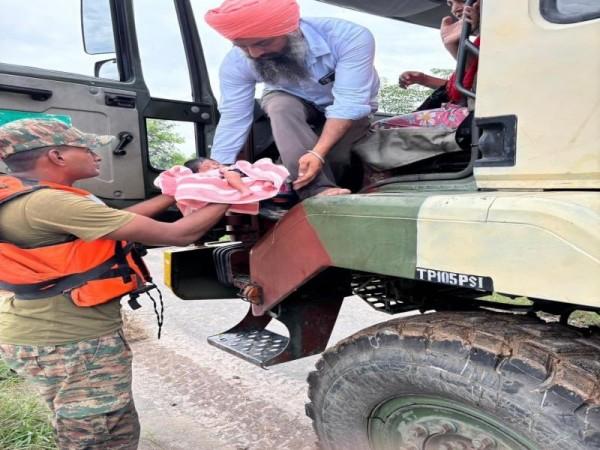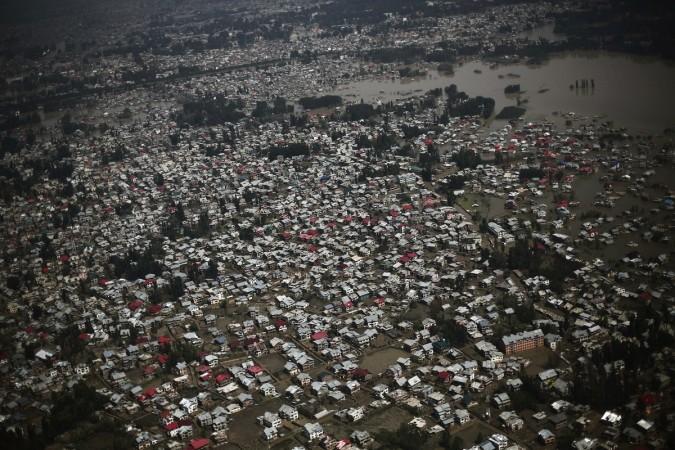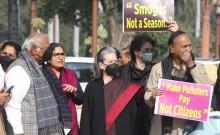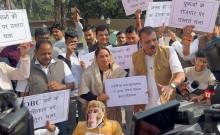
In a significant humanitarian effort, the Western Command of the Indian Army has successfully rescued over 5,000 civilians and 300 paramilitary personnel from the flood-affected regions of Jammu, Punjab, and parts of Himachal Pradesh. This large-scale operation, initiated on August 16-17, involved the deployment of 47 columns comprising troops, engineers, medical detachments, and aviation assets. The swift mobilization was crucial in addressing the escalating flood crisis, ensuring the safety and well-being of thousands of people stranded in these regions.
The Indian Army's Western Command, headquartered in Chandigarh, has been at the forefront of these rescue and relief operations. The operation was launched in response to severe flooding that inundated large areas, leaving many communities isolated and in urgent need of assistance. The Army's rapid response played a pivotal role in mitigating the impact of the floods and safeguarding the lives of affected individuals.

The rescue operations were not confined to ground efforts alone. Aviation assets, including Advanced Light Helicopters, Reconnaissance and Observation helicopters, Mi-17s, and a Chinook, were deployed to conduct sustained sorties. These aircraft have flown over 250 hours, facilitating the timely evacuation of stranded civilians and the aerial delivery of critical supplies. Approximately 21 tonnes of relief material, including food packets, medicines, and essential commodities, have been delivered to isolated villages, both on the ground and through aerial drops.
Coordinated Efforts and Strategic Planning
A flood control and water level monitoring cell has been established to function round-the-clock, monitoring water levels across major headworks such as the Bhakra-Nangal Dam and the Ranjit Sagar Dam. This cell plays a vital role in ensuring that the Army's operations are informed by real-time data, allowing for a more effective response to the evolving situation. The operations are being conducted in close coordination with the civil administration, the National Disaster Response Force (NDRF), and the State Disaster Response Force (SDRF).
This integrated approach has ensured the optimal use of resources and timely assistance to affected populations, reflecting the nation's resilience and unity during crises. "This proactive measure has enabled timely deployment and response to emerging threats," stated an Army spokesperson. In addition to the rescue and relief efforts, the Army has also been instrumental in restoring essential services. On August 27, communication teams laid more than two kilometers of optical fiber cable, restoring mobile connectivity and enabling smooth coordination of relief measures.
Subsequently, Army engineers constructed a Bailey Bridge at Jammu Tawi within 12 hours on August 29, restoring a vital lifeline for the city. The challenges faced by the Army were significant, particularly in areas along the Ravi and Chenab rivers, where enclaves had become inundated. These areas, located between the river and the border fence, required careful coordination to ensure the safety of both civilians and Border Security Force (BSF) personnel. Despite these challenges, the Army successfully evacuated those at risk while maintaining adequate strength to ensure the security of the area.
Government Support and Community Resilience
Union Home Minister Amit Shah visited the flood-ravaged Mangu Chak village in the Jammu region to oversee relief work and assure the victims of early rehabilitation. After interacting with the residents, Shah stated, "Today, visited Mangu Chak, a village affected by the recent floods in Jammu. Relief and rescue operations are being carried out in full swing by disaster response forces, along with providing assistance in medical care to the affected people." He reiterated the government's commitment to stepping up disaster relief work, emphasizing, "The Modi government is committed to taking adequate measures for the rehabilitation of the affected people."
Shah also inspected the Tawi Bridge, noting the damage caused by the flood. "Today in Jammu, inspected the Tawi Bridge and the damage caused by the flood. The Modi government stands firmly with the affected people and will make all efforts to help them," he said. Shah was accompanied by Lieutenant Governor of Jammu and Kashmir Manoj Sinha and officials of the district administration during his visit. The Army's efforts have been widely praised for their effectiveness and speed.
Major General Puneet Ahuja and Colonel Iqbal Singh Arora addressed a press conference at the Western Command headquarters in Chandimandir, Panchkula, highlighting the integrated approach that ensured optimal use of resources and timely assistance to the affected population. "The integrated approach ensured optimal use of resources and timely assistance to the affected population, reflecting the nation's resilience and unity during the crisis," said Major General Ahuja.

















